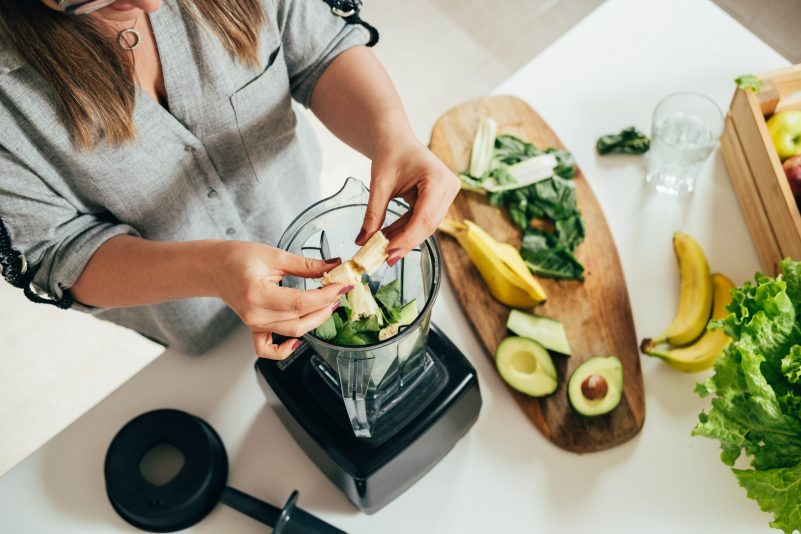Are you slouching right now? Don’t worry, we all do it from time to time. But, if this is a chronic habit, you could be putting your health at risk. In fact, good posture goes beyond appearance and affects many aspects of wellness and quality of life. If you slouch, you can do something about it. You can take steps to improve posture today.
Here’s how and why you should.
What is Posture?
Simply, posture is how you hold your body when moving, or when being still. There are 2 types of posture:
- Dynamic Posture. Dynamic posture is how you hold yourself when moving or being active. This includes when you are walking, running, picking something up, carrying something, playing sports, and more.
- Static Posture. Static posture is how you hold your body when you are not moving, or at least, not moving your torso. This includes sitting, standing, or sleeping. It can also include when you are sitting and eating, typing, writing, etc.
Both types of posture are important. Whether dynamic or static, posture involves your spine and your core, from your glutes through your abdominal muscles.
Naturally, your spine has curves to it. It curves at your neck, middle of your back, and your lower back. When you practice good posture, whether dynamic or static, you allow these natural curves to remain, but you don’t increase them.
Good posture is being practiced when your head is above your shoulders (not in front), and your shoulders are above your hips.
Why is Posture Important for Health?
According to the National Institutes of Health, approximately 80% of Americans suffer back problems, and poor posture is a major culprit to the problem (1).
While slouching used to be considered mostly an appearance concern, we now know it goes far beyond aesthetics. What’s more, as many modern Americans spend the majority of their awake hours sitting and looking at a computer, or holding and looking at a device, the problem is only getting worse.
Slouching can cause:
- Degraded, fragile spine tissue
- A misaligned musculoskeletal system
- A decrease in spine flexibility
- Neck, shoulder, and back pain
- Reduction in joint movements
- Worsening balance
- Increased risk of falling
- Poor digestion
- More labored breathing
10 Tips to Improve Posture
1. Practice Mindfulness with Posture
If you’ve not thought much about it before, it’s easy to sit all day and ignore posture. To improve posture, it must first become something that you think about. Hopefully, after learning and practicing better posture, you will create muscle memory and not have to actively think about it as much.
How can you become more mindful?
To develop the habit of mindfulness, try:
- Taping a picture of good posture to the side of your computer screen.
- Setting a 30-minute check-your-posture alarm on your computer.
- Enlist a posture buddy and mutually remind each other about posture.
- Trying a posture tool. These relatively inexpensive gadgets strap around your shoulders and buzz when they are moved to a tilted position. More expensive models can stick directly to your back without straps.
2. Raise Your Computer and Devices
If you are one of the many adults (or students) who look at a device most of the day, it’s important to physically raise the screen so you can look at it without looking down. If it’s a computer, you may need to add shelves (or large books) under it. If it’s a device you hold, get into the habit of holding it higher, and not looking down at the screen.
In addition, you can improve posture when sitting by:
- Getting up every 30 minutes or so to stand, stretch, etc.
- Switching positions often
- Using an ergonomically correct chair, footrest, or balance ball
- Relaxing your shoulders; do not hunch them towards your ears.
- Keeping both feet on the floor or a footrest. Don’t cross your legs.
- Keeping your elbows close to your body.
- Keeping your back, thighs, and hips fully supported if sitting in a chair.
- Mindfully engaging your core to hold your spine in a strong position.
3. Improve Your Weight, if Needed
If you are overweight, you are putting more pressure on your spine to hold the weight up correctly. This can affect your abdominal muscles, pelvis and spine, lower back, and even neck.
A great and effective way to optimize your weight and increase energy is with a ketogenic diet. To get started, check out our FREE 21 Day Keto Zone Challenge or Dr. Colbert’s Keto Zone Diet Book and get started towards a healthy weight that supports back health today.
4. Wear Flat Shoes
High heels, which can cause you to lean forward, or overcompensate with your hips, can be a posture problem. If possible, limit your use of high heel shoes. When and if you do where them, be mindful of your posture and do your best to keep your hips, back, and neck aligned.
5. Strengthen Your Core
It’s often said that a strong core leads to a strong back (and vice versa). If you tend to slouch, it may be time to work on your core strength as well.
One of the best core exercises you can do is a simple plank. If you practice it daily and engage your abs and glutes while increasing your time in the position, you can improve posture and core strength.
To perform a Straight-Arm Plank:
- Plant hands directly under shoulders (slightly wider than shoulder-width) like you’re about to do a push-up.
- Keep toes on the floor and squeeze glutes to stabilize your body. Your legs should be activated. Do not lock or hyperextend your knees.
- Look at a spot on the floor about one foot beyond your hands to neutralize your neck and spine. Your body should be straight and your head should be in line with your back.
- Start by holding this position for 20 seconds, increasing time as you become more comfortable. But, don’t compromise the position or let your hips sag. Keep core tight and body straight.
Forearm Plank: If you’d like to try the forearm plank variation, simply place forearms on the floor with elbows aligned below shoulders and arms parallel to your body at about shoulder width. If flat palms bother your wrists, clasp your hands together.
6. Stay or Get Active
Beyond core strengthening, any kind of exercise can help strengthen muscles and improve posture (especially if done with good posture). Some great activities that improve posture include yoga, tai chi, pilates, and others that focus on body position and awareness.
7. Walk and Stand with Your Head Held High
It’s probably easier to be mindful about good posture when sitting, but challenging when in action or walking.
When you stand or walk, you can improve your posture by:
- Keeping your shoulders back and pulling your stomach in
- Standing up as tall as possible
- Keeping your weight on the balls of your feet
- Keeping your chin level
- Allowing your arms and hands to move naturally and freely
- Keeping your feet in a natural stance, around shoulder-width apart
It does take practice, but good posture is worth it.
8. Sleep on Your Back
Some experts believe that your sleeping posture can negatively affect your overall posture, especially if you tend to sleep on your belly. When you sleep belly-down, with your head turned to one side or the other, you can strain your neck and spine in ways that also affect tension and posture during waking hours.
To reduce strain and tension, it’s best to sleep on your back or side with your head and neck in a neutral position, and propping pillows as needed.
9. Release the Tension
Stress can manifest itself in many physical ways, including stiffness in the shoulders, neck, and back. When we tense these areas of our bodies due to mental tension, we can cause poor posture and misalignment.
To undo the damage, release the tension both physically and mentally.
First, you can do a quick relaxation technique throughout your spine. Raise your chin, roll your shoulders back, and puff out your chest. Visualize a pinching motion between your shoulder blades. Slowly nod your head yes for a few seconds, then slowly shake your head no. Shrug your shoulders to your ears, then gently lower to their natural position.
Next, practice deep breathing.
Lastly, get to the root of the tension problem without tips to reduce cortisol and stress.
10. Stretch Every Day
While plain old stretching may seem old-school to many, it can help you become more body aware, relax your spine, and even support blood pressure.
Concentrate on spine flexibility by sitting and reaching toward your toes, and then laying on your back with arms overhead elongating your entire body. Repeat.
Bottom Line
Posture is a big deal. Use these 10 strategies to improve posture, health, and stress today. And, for tips on overall wellness, keto lifestyle, and great recipes, try out FREE 21 Day Keto Zone Challenge today!

















